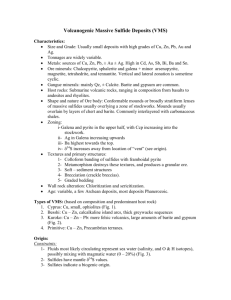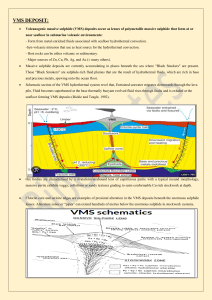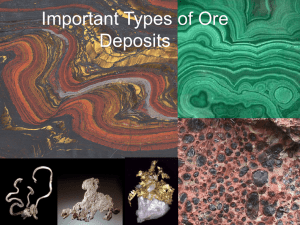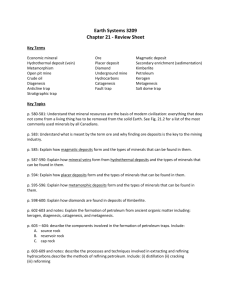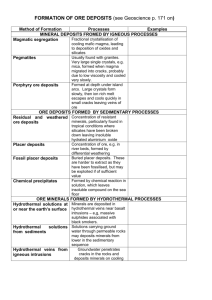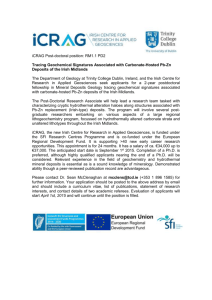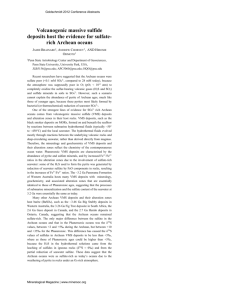Material properties and microstructure from
advertisement
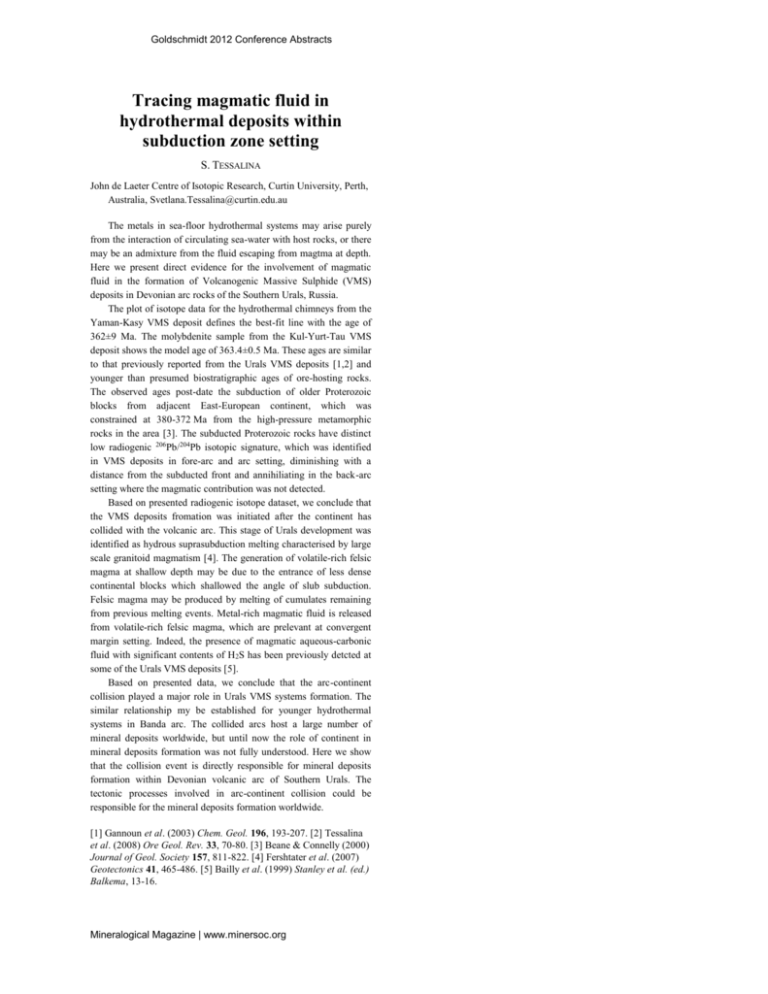
Goldschmidt 2012 Conference Abstracts Tracing magmatic fluid in hydrothermal deposits within subduction zone setting S. TESSALINA John de Laeter Centre of Isotopic Research, Curtin University, Perth, Australia, Svetlana.Tessalina@curtin.edu.au The metals in sea-floor hydrothermal systems may arise purely from the interaction of circulating sea-water with host rocks, or there may be an admixture from the fluid escaping from magtma at depth. Here we present direct evidence for the involvement of magmatic fluid in the formation of Volcanogenic Massive Sulphide (VMS) deposits in Devonian arc rocks of the Southern Urals, Russia. The plot of isotope data for the hydrothermal chimneys from the Yaman-Kasy VMS deposit defines the best-fit line with the age of 362±9 Ma. The molybdenite sample from the Kul-Yurt-Tau VMS deposit shows the model age of 363.4±0.5 Ma. These ages are similar to that previously reported from the Urals VMS deposits [1,2] and younger than presumed biostratigraphic ages of ore-hosting rocks. The observed ages post-date the subduction of older Proterozoic blocks from adjacent East-European continent, which was constrained at 380-372 Ma from the high-pressure metamorphic rocks in the area [3]. The subducted Proterozoic rocks have distinct low radiogenic 206Pb/204Pb isotopic signature, which was identified in VMS deposits in fore-arc and arc setting, diminishing with a distance from the subducted front and annihiliating in the back-arc setting where the magmatic contribution was not detected. Based on presented radiogenic isotope dataset, we conclude that the VMS deposits fromation was initiated after the continent has collided with the volcanic arc. This stage of Urals development was identified as hydrous suprasubduction melting characterised by large scale granitoid magmatism [4]. The generation of volatile-rich felsic magma at shallow depth may be due to the entrance of less dense continental blocks which shallowed the angle of slub subduction. Felsic magma may be produced by melting of cumulates remaining from previous melting events. Metal-rich magmatic fluid is released from volatile-rich felsic magma, which are prelevant at convergent margin setting. Indeed, the presence of magmatic aqueous-carbonic fluid with significant contents of H2S has been previously detcted at some of the Urals VMS deposits [5]. Based on presented data, we conclude that the arc-continent collision played a major role in Urals VMS systems formation. The similar relationship my be established for younger hydrothermal systems in Banda arc. The collided arcs host a large number of mineral deposits worldwide, but until now the role of continent in mineral deposits formation was not fully understood. Here we show that the collision event is directly responsible for mineral deposits formation within Devonian volcanic arc of Southern Urals. The tectonic processes involved in arc-continent collision could be responsible for the mineral deposits formation worldwide. [1] Gannoun et al. (2003) Chem. Geol. 196, 193-207. [2] Tessalina et al. (2008) Ore Geol. Rev. 33, 70-80. [3] Beane & Connelly (2000) Journal of Geol. Society 157, 811-822. [4] Fershtater et al. (2007) Geotectonics 41, 465-486. [5] Bailly et al. (1999) Stanley et al. (ed.) Balkema, 13-16. Mineralogical Magazine | www.minersoc.org
